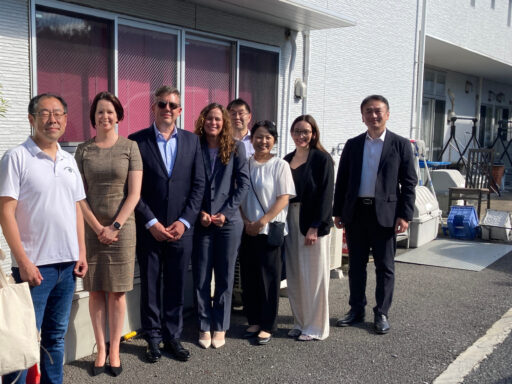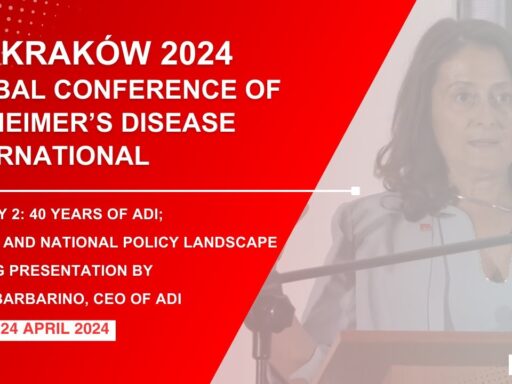World Alzheimer Report 2020
Training and education
The narrative so far has illustrated the progress that has been made in designing for people living with dementia. It has been a 40-year journey, starting with some pioneers who set out to shift the paradigms of the times towards the vision of the person living with dementia enjoying a full and satisfying life. They started with little more than their own inspiration, fuelled by the belief that there had to be a better way. It is clear that we have moved beyond that stage. There is now an established body of knowledge that is capable of guiding the design of the built environment so that it supports people living with dementia. However, this report illustrates that the knowledge has not yet been adopted into practice in many parts of the world and that it should not be taken for granted that knowledge gained in high income countries can be applied, or is even relevant to, the challenges faced in low or middle income countries. The chapters in this section showcase well developed approaches to education and training that are effective within their high-income contexts but may appear to be impractical, or even irrelevant, in contexts that do not have the same availability of long-term care options. The chapter written by Ishtar Govia and her colleagues explores the issues faced in low- and middle-income countries. It challenges all of us who are dedicated to improving the lives of people with dementia to recognise that
education and training do not stand alone, they must take their place within a systematic commitment to research, the involvement of people with dementia in devising educational programmes and the implementation of the human and disability rights that have been offered.
Perhaps one way to facilitate the inclusion of training in these activities is to recognise that they are all engaged in knowledge translation. Researchers and practitioners continue to add to the knowledge base but,
perhaps, rather than focussing on adding to knowledge the most pressing task today is translating the knowledge we have into practice.
There are many things that have to be done to complete this translation. Most of them fit into four basic stages of knowledge translation – raising awareness that there is new knowledge, coming to an agreement that this knowledge is relevant to the task at hand, working out how it can be adopted into practice and then building the newly developed practice into policies, guidelines, handbooks, standards or even legislation to ensure that it becomes business as usual. This can be summarised as the four As of knowledge translation – Awareness, Agreement, Adoption and Adherence.
While knowledge translation (KT) requires a range of activities as different from one another as advertising campaigns and standards development, training and education are central to all successful KT.
In general terms education and training contribute to increasing the quality of life of people living with dementia (and those who interact with them) by:
- raising awareness of the importance of design in the care and support of people living with dementia
- raising awareness of the importance of the use of the environment in the care and support of people living with dementia, and those who work with them (from nursing staff to gardeners, occupational therapists to cleaners)
- providing a forum for negotiation about the relevance and applicability of the knowledge about design to particular situations and contexts
- teaching design professionals working in this field how to apply the knowledge in practice
- teaching the users of the buildings how to use them to get the outcomes that they desire
- furthering the evolution of a design literacy that can be applied with rigour in an innovative and evolving way, ensuring the continued development of the field In this section the specifics of these
- aspects of training, and more, are explored in case studies from Australia. Canada, Great Britain, Japan, Singapore and the USA. It is heartening to see such a variety of successful approaches.
However, notwithstanding the availability of these programmes, it is clear there is still much to be done if the design of environments for people living with dementia is to be included in key areas of influence, such as
- precinct planning
- course curricula for design and health professionals
- statutory guidelines and regulations
- government policy
- national dementia plans
The major challenge, of course, is to develop and provide this training in culturally sensitive ways that take into account the movement towards a holistic, values driven approach to care.
COVID-19 and Designing for People with Dementia
No report written in 2020 on any aspect of care for people living with dementia would be complete without consideration of the impact of COVID-19. Alison Dawson and her co-authors – Long term care and the coronavirus pandemic: a new role for environmental design in a changing context – present an argument that the
restrictions imposed to minimise the risk of harm to residents resulting from COVID-19 have accelerated physical and cognitive declines and/or indirectly contributed to the deaths of some residents.
While they have been imposed with the best of intentions in an emergency situation, a continued emphasis on them will be a great threat to the strengths based models of care that have been developed in recent years. It is likely that they will lead to cognitive decline due to lack of stimulation or meaningful programming; physical deconditioning due to lack of ability to exercise and loneliness due to isolation.
They note that beyond the obvious impact of sharing rooms with multiple other residents,
little has been said by designers and researchers about how environmental design may have influenced the impact of COVID-19 in long term care to date or how it might contribute to reducing negative impacts in future.
They call on researchers to urgently address this gap in our knowledge so that we can better understand how environmental design can be a positive force in improving infection control within a strengths based approach. They specifically call for action to develop evidence-based modifications and designing long term care facilities which:
- reduce the risk of COVID-19 disease transmission and/or improve infection control for residents, staff and visitors – where possible without excessive negative impact on other areas of resident wellbeing
- incorporate dementia design principles to support and enable long-term care residents to maintain existing capabilities and enjoy their best possible lived experience of care; and
- are capable of being adapted to rapidly changing levels of threat from coronavirus and/or other future emerging infectious agents in ways which, in every configuration, maintain the opportunities for stimulation through activity and social interaction that are critical to residents’ wellbeing and quality of life
Their conclusion brings us back to the beginning of this report:
The principles of environmental design for dementia set out in the 1980s and 90s remain revolutionary and relevant. They have been greatly instrumental in shaping the physical, technical, caring and social environments of long-term care in ways which contribute positively to resident wellbeing and quality of life and to staff job satisfaction. These principles should not and must not be abandoned or made totally subservient to the needs of infection control.














